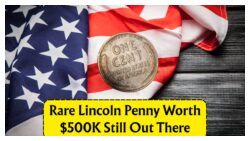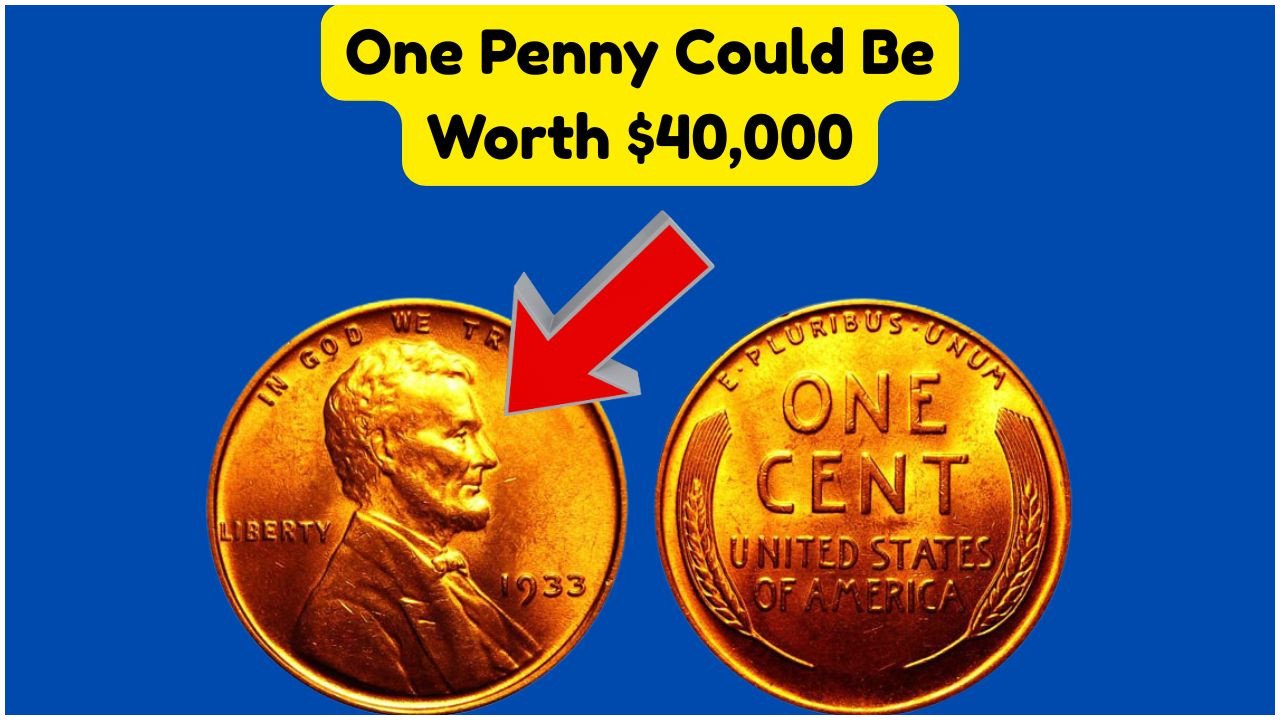$40,000 Lincoln Cent
Table of Contents
Exploring the $40,000 Lincoln Cent
$40,000 Lincoln Cent: Have you ever considered that the loose change in your pocket could be worth a small fortune? In the world of numismatics, or coin collecting, certain coins can be worth much more than their face value. One such treasure is the elusive $40,000 Lincoln Cent. This particular penny, with its unique features and rarity, has captured the attention of collectors and enthusiasts alike. Whether you are a seasoned collector or a casual observer, understanding the factors that contribute to the value of a Lincoln Cent can help you identify if you might be holding a potential goldmine.
- Understanding the historical context of the Lincoln Cent.
- Recognizing the key features that increase its value.
- Learning from notable auction sales of valuable Lincoln Cents.
- Knowing how to assess the condition of your coins accurately.
- Staying informed about current market trends in numismatics.
- Exploring stories of collectors who discovered valuable coins.
- Discussing the impact of mint errors on coin value.
Historical Significance of the Lincoln Cent
When it comes to understanding the value of a $40,000 Lincoln Cent, one must delve into its rich historical background. Introduced in 1909 to commemorate the 100th anniversary of Abraham Lincoln’s birth, the Lincoln Cent was the first U.S. coin to feature a real person. Its design, created by Victor David Brenner, was groundbreaking and marked a significant shift in American coinage. The historical context of this coin adds a layer of intrigue and desirability. Collectors are often drawn to its storied past, which not only celebrates one of the most revered Presidents in U.S. history but also represents a pivotal moment in the evolution of American currency. With various design changes and minting locations over the years, certain editions of the Lincoln Cent have become rare collectibles, sought after by those who appreciate both history and artistry.
| Year | Mint Mark | Design | Material | Rarity | Condition | Value | Significance |
|---|---|---|---|---|---|---|---|
| 1909 | VDB | Lincoln | Bronze | Rare | Excellent | $40,000 | First design |
| 1943 | Steel | Lincoln | Steel | Common | Good | $1,000 | Wartime change |
| 1955 | Double Die | Lincoln | Bronze | Rare | Excellent | $20,000 | Mint error |
| 1969 | S | Lincoln | Bronze | Very Rare | Mint | $30,000 | Mint error |
| 1972 | Double Die | Lincoln | Bronze | Rare | Good | $5,000 | Mint error |
| 1983 | Double Die | Lincoln | Zinc | Uncommon | Mint | $2,500 | Mint error |
| 1992 | Close AM | Lincoln | Zinc | Extremely Rare | Mint | $25,000 | Design error |
| 2009 | All | Lincoln | Various | Common | Mint | $10 | Anniversary |
Recognizing Rare Lincoln Cents
Identifying a rare Lincoln Cent can feel like finding a needle in a haystack, but with a keen eye, you might just strike gold. Many factors contribute to the rarity of these coins, including minting errors, limited production years, and unique design features. Coins from specific years, such as the 1909-S VDB and the 1955 Double Die, are particularly valued among collectors. These coins, often minted in error or in limited numbers, are highly sought after and can fetch impressive prices at auctions. Furthermore, the condition of the coin plays a crucial role in determining its value. Coins that have been well-preserved, showing minimal wear and tear, are more desirable. Collectors often use grading systems to assess the condition, ranging from poor to mint state, which helps in setting a fair market value.

Rare Lincoln Wheat Penny Worth $500K Could Still Be in Circulation – Here’s What to Look For
- 1909-S VDB Lincoln Cent
- 1955 Double Die Obverse
- 1943 Bronze Lincoln Cent
- 1944 Steel Lincoln Cent
- 1969-S Double Die Obverse
- 1972 Double Die Obverse
- 1992 Close AM Lincoln Cent
Assessing Coin Condition and Value
Understanding how to assess the condition of your Lincoln Cent is essential for determining its value. Coin grading involves examining the coin’s surface for signs of wear, scratches, and other imperfections. The Sheldon Scale, ranging from 1 to 70, is commonly used, with 70 indicating a perfect coin with no visible flaws. Coins that fall within the higher end of this scale are much more valuable, as they have been preserved in their original mint state. Additionally, other factors, such as the coin’s luster, color, and strike quality, contribute to its overall grade. For collectors, a coin’s provenance, or its history of ownership, can also impact its desirability and price. Collectors should consider seeking professional appraisal services to ensure an accurate assessment and to authenticate any claims of rarity or historical significance.
- Examine the coin’s surface for imperfections.
- Use the Sheldon Scale for grading accuracy.
- Consider the coin’s luster and color.
- Evaluate the coin’s strike quality.
- Research the coin’s provenance.
- Seek professional appraisal services.
- Authenticate rarity claims with expert verification.
Stories of Remarkable Discoveries
The world of coin collecting is filled with fascinating stories of unexpected discoveries that have changed the lives of ordinary people. Imagine finding a seemingly ordinary penny in your change, only to discover it is a rare Lincoln Cent worth thousands of dollars. Such stories are not just urban legends but have been documented numerous times. For instance, one collector stumbled upon a 1943 Bronze Lincoln Cent, a coin accidentally minted in bronze instead of steel during World War II, which fetched over $100,000 at auction. Another collector found a 1992 Close AM Lincoln Cent in a roll of pennies purchased from the bank, which sold for a small fortune. These tales inspire both seasoned collectors and novices to keep an eye out for potential treasures in their everyday transactions.
- 1943 Bronze Lincoln Cent discovery
- 1992 Close AM Lincoln Cent find
- 1955 Double Die Obverse in circulation
- 1969-S Double Die Obverse at auction
- 2009 Lincoln Bicentennial circulation
- 2017-P Lincoln Cent with mint mark
- Famous collector auctions and sales
Understanding Mint Errors and Their Impact
| Mint Error | Description | Value Impact |
|---|---|---|
| Double Die | Misalignment causing a doubled image | Significant increase |
| Off-Center Strike | Image struck off-center, partial design visible | Moderate increase |
| Wrong Planchet | Coin struck on incorrect metal planchet | Major increase |
| Transitional Error | Coin struck with previous year’s design or metal | High increase |
| RPM (Repunched Mintmark) | Mintmark punched multiple times | Variable increase |
Collector Tips for Identifying Valuable Coins
For those eager to explore the world of coin collecting, identifying valuable coins requires a blend of knowledge, patience, and keen observation. Begin by familiarizing yourself with the key characteristics of rare Lincoln Cents, such as unique mint marks, specific years, and known mint errors. Developing a habit of examining your change for these features can lead to exciting discoveries. Utilize resources like coin collecting books, online databases, and forums to stay updated on recent finds and market trends. Attending coin shows and auctions can provide valuable insights into the current demand for certain coins. Networking with fellow collectors can also offer opportunities to learn and share experiences. Remember, persistence and a little luck can go a long way in the hunt for a $40,000 Lincoln Cent!

The Lincoln Wheat Penny Worth $100,000 Still Circulating – Check Your Pockets
Frequently Asked Questions About Lincoln Cents
What makes a Lincoln Cent rare?
Lincoln Cents become rare due to factors like mint errors, limited mintage, and historical significance. Examples include the 1909-S VDB and 1955 Double Die.
How can I determine the condition of my coin?
Assess your coin’s condition using the Sheldon Scale, examining factors like surface wear, luster, and strike quality.
Are all Lincoln Cents valuable?
Not all Lincoln Cents are valuable. Specific years, mint marks, and conditions contribute to their value, making some coins worth significantly more than others.
Where can I sell my rare Lincoln Cent?
Consider selling rare Lincoln Cents at coin shows, auctions, or through reputable numismatic dealers to ensure a fair price.
What should I do if I find a rare coin?
If you find a rare coin, have it professionally appraised and authenticated before deciding to keep, sell, or trade it.
Disclaimer: This article is written for general informational purposes only. Please get the latest and accurate information from the official website.



